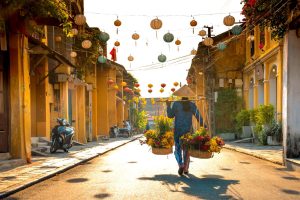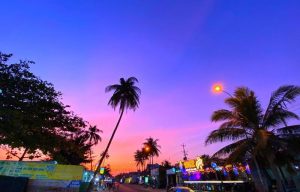Hai Van Pass is a must-see place for anyone passing through central Vietnam. Famous for its stunning coastal scenery and twisting mountain roads, the pass provides a special blend of natural beauty and cultural appeal. Running along the edge of Thua Thien-Hue and Da Nang, this picturesque route has become a favorite among adventure travelers and photographers.
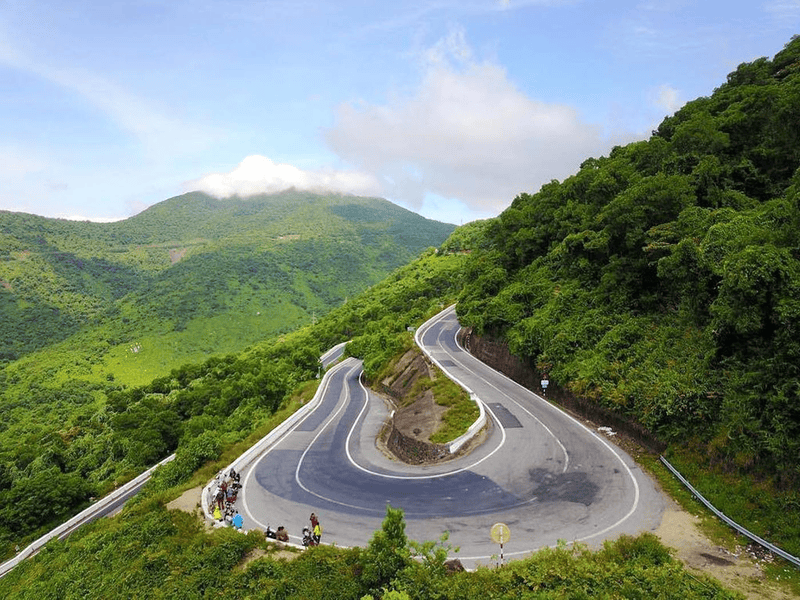
What is Hai Van Pass and why is it famous
The Hai Van Pass is one of the most iconic roadways in Vietnam, renowned for its stunning panoramic views and winding routes through rugged mountain terrain. Reaching an elevation of 496 meters (1,627 feet) above sea level, this scenic route, also known as the Hai Van Mountain Pass, has become a symbol of natural beauty and adventure, attracting countless tourists and motorbike enthusiasts from around the globe. Spanning approximately 21 kilometers, the pass offers dramatic vistas of the South China Sea on one side and lush, green mountains on the other. Situated on a spur of the Annamite Range that juts into the South China Sea, its combination of natural splendor and engineering marvel elevates its status as a world-class travel destination.
Tourists frequently remark on the sheer exhilaration of driving along the Hai Van Pass in Vietnam. The road’s steep inclines and tight curves, with an average gradient of 5% and a maximum of 7.5%, create a thrilling experience that is both challenging and rewarding. Beyond its appeal to adventure seekers, the pass is also celebrated by those looking for a peaceful escape into nature. Often shrouded in mist rising from the sea, the interplay of natural fog, rugged cliffs, and the vast ocean makes Hai Van Pass Vietnam a captivating natural landmark that embodies the charm and mystery of Vietnam’s central coast.
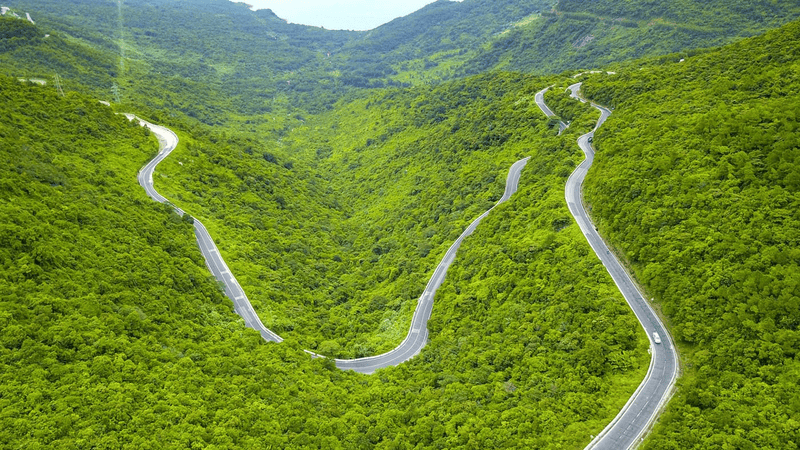
History and cultural significance of Hai Van Pass
The Hai Van Pass is rich with history dating back centuries. It was once a strategic military path and trading passageway, later becoming a lifeline connecting different parts of Vietnam. The pass has been described in Vietnamese literature and culture for centuries as a symbol of strength and nature’s majesty by the local legend and historical writings. Its significance is more than mere transit, as it is a line of separation among cultures of various regions and a bridge from the past to the present.
Across time, the Hai Van mountain pass was a place where numerous historic events and actions took place and were witnessed, remaining a silent historian of the construction of the Vietnamese nation. With its natural geographical location, it provided shelter amidst wars, and its tough landscape has stimulated generations of artists and poets. Today, travelers coming to the Hai Van Pass in Vietnam can experience the whispers of history around every turn of the road, and it’s not only a place for scenic vistas but also an excursion into the heart of Vietnam’s rich cultural heritage.
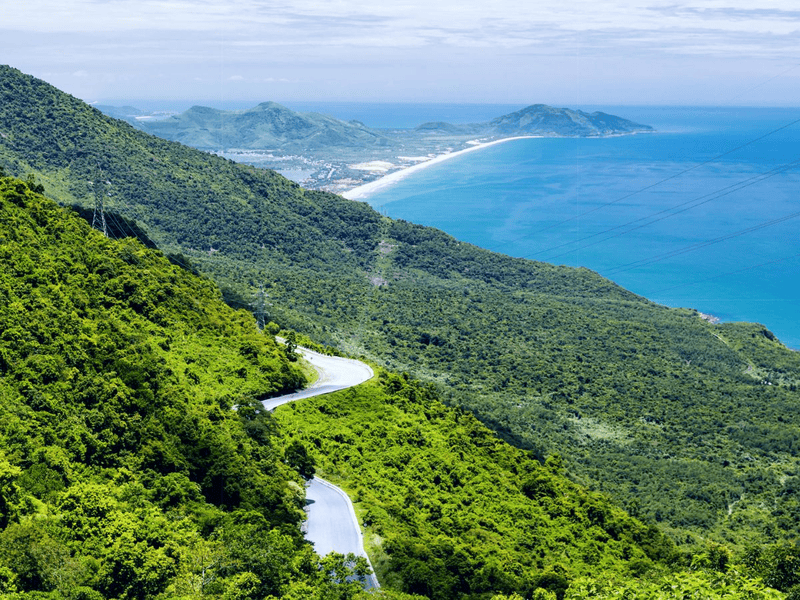
Things to see and do on Hai Van Pass
Visitors to the Hai Van Pass have a myriad of activities and attractions. The journey itself is an adventure, with ample opportunity to absorb nature’s beauty and witness the local culture. A few of the attractions for travelers are:
- Breathtaking viewpoints: There are many lookout points on the pass where visitors can stop and enjoy the panoramic views out over the ocean and mountain ranges. They make excellent spots for photography and quiet reflection.
- Scenic drives: Known as the Hai Van mountain pass, the winding roads ensure that it is an exhilarating drive for car and motorbike travelers, with a close-up view of Vietnam’s dramatic landscape.
- Cultural landmarks: Along the route, there are several small temples and historic markers that speak to the region’s history, a testament to how long the Hai Van Pass in Vietnam has held cultural value.
- Local cuisine: Along the route, there are a few stops where locals set up vendors with traditional Vietnamese snacks and meals, enabling guests to try some local flavors against the stunning scenery.
- Hiking opportunities: For travelers who are prepared to leave the vehicle behind, the surrounding hills and trails offer the chance for trekking and exploring, offering a unique perspective on the pass and its natural surroundings.
All of these activities combine to make a visit to the Hai Van Pass a diverse experience that blends nature, adventure, and culture in a unique way.
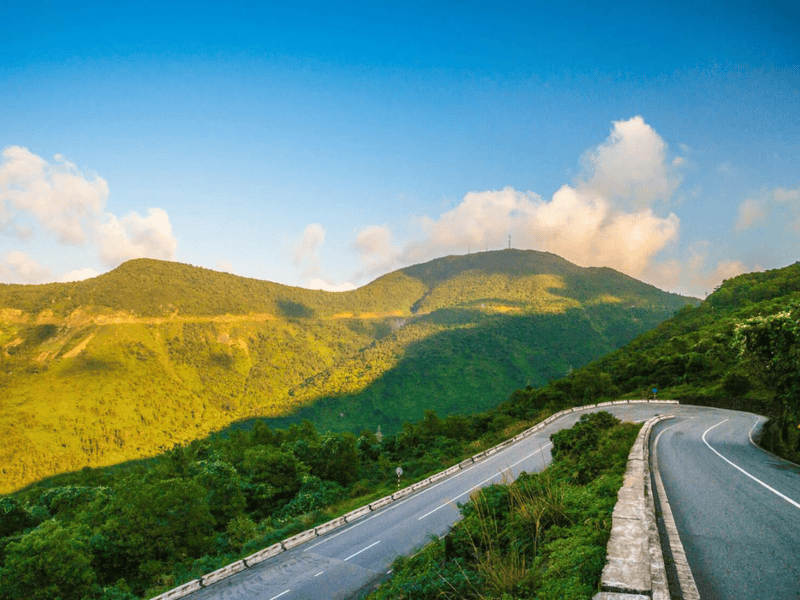
How to travel the Hai Van Pass
Traveling up the Hai Van Pass requires some good planning as well as a bit of flexibility. The majority of tourists favor riding the pass on a motorbike or a car in order to benefit from its winding road and scenic overlooks. It is open all year round, but there are certain conditions, such as heavy rain, that may have an impact on road safety. Some regarding traveling up the Hai Van Pass in Vietnam are:
- Vehicle choice: Riding by motorbike is preferred by adventurous bikers who want to experience the hai van mountain pass themselves. For those not as sure about two-wheelers, a car would be a better choice.
- Safety gear: No matter where you travel, ensure that you possess proper safety gear. Helmets, protective equipment, and proper shoes are an absolute necessity while riding over the challenging curves of the Hai Van mountain pass.
- Time of day: Early morning or late afternoon ride times are typically optimal for photography and provide a less crowded route. Avoid peak hours to reduce the likelihood of encountering heavy traffic.
- Local guidance: It’s worth paying for a local guide familiar with the Hai Van Pass. They can offer history, safety , and details on the best stops along the way.
- Navigation equipment: Even though the route is well signposted, it is best to have a GPS or map offline, especially for those not used to the terrain.
- Weather monitoring: It is always best to check the weather forecast beforehand because the pass has a tendency to experience sudden weather changes.
The above travel advice ensures that visitors are able to enjoy a safe and memorable journey along one of Vietnam’s most famous scenic routes.
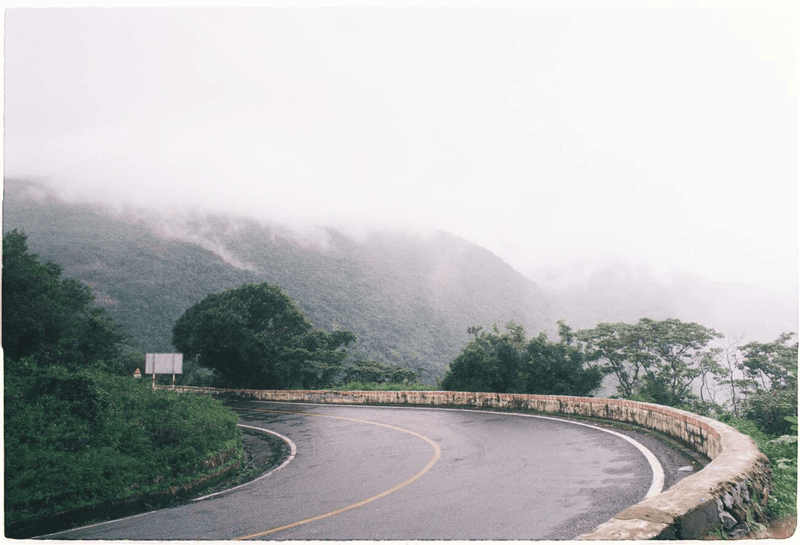
Suggested Hai Van Pass travel itinerary
Planning a visit to the Hai Van Pass can be greatly enhanced with a well-structured itinerary. Below are some suggested itineraries for different time frames and interests:
One-day itinerary from Da Nang to Hue via Hai Van Pass
With a one-day tour from Da Nang to Hue via the Hai Van Pass, travelers have an experience that mixes nature scenes, cultural points, and indigenous interaction. What follows is a comprehensive travel guide on how to maximize the experience from this magnificent road:
Morning: Departure from Da Nang
Set out early at 8:00 AM in order to give you enough time to stop and do some sightseeing. When motorbiking, ensure that it is properly serviced and petrol tank full because petrol stations along the pass are minimal. Majority of the car-renting businesses offer for transporting your bag independently to Hue so that you have a smooth ride.
Mid-Morning: Ride up Hai Van Pass
Take the ancient National Route 1A rather than the Hai Van Pass Vietnam, which rises 21 km to an altitude of 496 meters. Then take a stroll around the remains of French and American bunkers at the summit, with panoramic views of the coastline. You can take photos of the misty landscape and of the contrast between the sea and the green mountains. Though be ready to face abrupt changes; the pass is frequently blanketed by mist, and sudden rain may ensue.
Noon: Descent Towards Lang Co Bay
Having descended, take a pause at Lang Co Bay, famous for its spotless beaches and pure waters. Indulge in fresh seafood in local restaurants on the banks overlooking the bay.
Early Afternoon: Lap An Lagoon Discovery
You need to take a short drive from Lang Co Bay to Lap An Lagoon. The lagoon offers serene environments and is ideal for photography and unwinding.
Mid-Afternoon: Onward to Hue
You have 2 options to get back to Hue:
- Expressway: A quicker ride to Hue, about 1.5 hours.
- Coastal road: A scenic route through villages in the country, about 2 hours longer, but giving the real picture of rural life.
Late Afternoon: Arrive in Hue
Check into your hotel in Hue. If time allows, visit the Imperial City or take a walk along the Perfume River to conclude the day.
This itinerary offers a complete experience of the Hai Van mountain pass with a combination of nature and culture to ensure your journey from Da Nang to Hue is memorable and rewarding.

Half-day return trip with photo stops
For the short-term visitor, a half-day return trip from the Hai Van Pass is an intimate but fulfilling experience of Vietnam’s central coastline. With a typical length of 4 to 5 hours, the tour has ample time for photos and sightseeing.
From Da Nang or Hue
Depart at 8:00 AM to avoid the heat of the day and enjoy clearer skies. There are plenty of choices for you like renting a motorbike, hiring a private car, or a guided tour. Ensure your vehicle is in good condition and well-fuelled.
Key photo stops
- Hai Van Pass summit: With an elevation of 496 meters above sea level, the summit gives a bird’s eye view of mountains and coastline. French and American bunkers’ remains add historic significance to your journey.
- Lang Co Bay: A picturesque spot well known for its blue color and white sandy beach. It’s ideal for capturing the natural beauty of Vietnam’s coast.
- Lap An Lagoon: Situated near Lang Co Bay, this peaceful lagoon is surrounded by mountains and is particularly photogenic during sunrise or sunset.
- An Bang Cemetery: Spookily referred to as the “City of Ghosts,” this cemetery features elaborate tombs and statues, which reflect the local beliefs and customs.
Having explored these spots, begin your way back, taking care to drive carefully, especially along the curves of the pass.
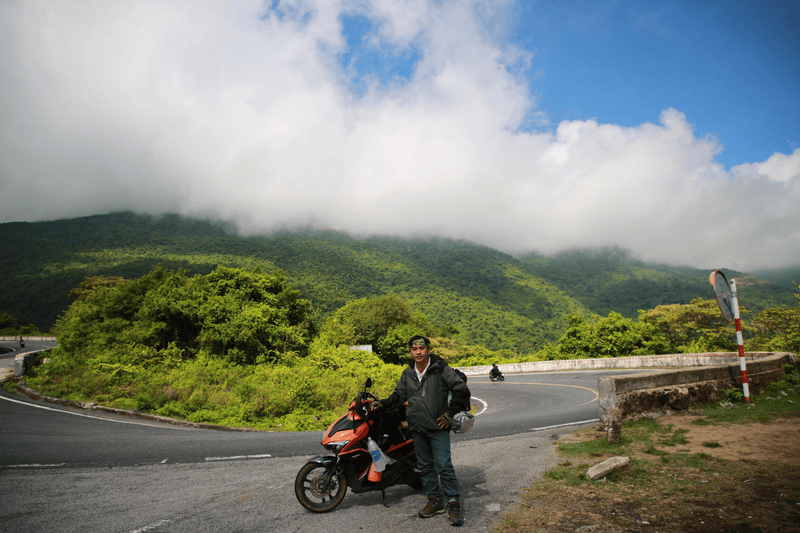
Combine Hai Van Pass with Marble Mountains and Lang Co Bay
For those who wish to have an in-depth experience of central Vietnam’s natural wonders and cultural heritage, inserting the Hai Van Pass Vietnam between tours of the Marble Mountains and Lang Co Bay gives a complete experience. This tour balances scenic drives, landmarks, and beach lounging.
Morning: Visit the Marble Mountains
Begin the day at Marble Mountains (Ngu Hanh Son), about 9 kilometers south of the city center of Da Nang. These five marble and limestone hills are renowned for their intricate cave systems, ancient pagodas, and extensive vistas. Highlights are as follows:
- Thuy Son (Water Mountain): The easiest and highest peak, which boasts the Linh Ung Pagoda and some caves with Buddhist shrines.
- Am Phu Cave: A cave-like space symbolizing the Buddhist concept of hell, which is decorated with stalactites and stalagmites.
Visitors can climb up stone steps or use an elevator for easy access. Spend 1.5 to 2 hours to fully enjoy the site’s attractions.
Midday: Cross the Hai Van Pass
Departing the Marble Mountains, ride over the Hai Van Pass, a 21-kilometer mountain road of twists and turns that rises to an elevation of 500 meters. The road has breathtaking scenery of coastline and green forests. Some of the stops of note are:
- Hai Van Gate (Hai Van Quan): A historical gate at the top, offering panoramic views and a glimpse of the past of Vietnam.
- Scenic Viewpoints: Multiple pull-off areas provide opportunities for photography and appreciation of the surrounding landscapes.
The drive typically takes 1 to 1.5 hours, depending on the number of stops.
Afternoon: Relax at Lang Co Bay
Descending from Hai Van mountain pass, you’ll arrive at Lang Co Bay.
Located at the foot of the pass, this serene bay is famous for its 10-kilometer white sandy beach and turquoise waters. Things to do:
- Beach relaxation: Enjoy lying on the pristine sands or take a refreshing dip in the calm sea.
- Lap An lagoon: Close by, this brackish lagoon presents pretty vistas, particularly at sunset, and is well-suited to photography.
- Local cuisine: Enjoy fresh seafood at any of the bay’s numerous beachside restaurants.
Take 2 to 3 hours to take full advantage of the bay’s offerings before going back to your initial point or moving on to your next destination.

Best time to visit Hai Van Pass
The best time to see Hai Van Pass would be during the dry season, which is from February to April and also August to October. It is usually mild and sunny weather, making it perfectly suitable for tourists to enjoy the stunning views. Early morning and late afternoon are especially suitable, as a warm, golden light brings out the best in the natural scenery of the Hai Van mountain road.
Traveling during these peak periods reduces the risk of encountering heavy rain or fog that leads to whiteouts along Vietnam’s Hai Van Pass. Nevertheless, every season in Vietnam has its charm. For instance, traveling during the rainy season, as it does present some added challenges, can reveal another, mystical aspect of Hai Van Pass in Vietnam, as cloud and mist formations add a dramatic element to the landscape.
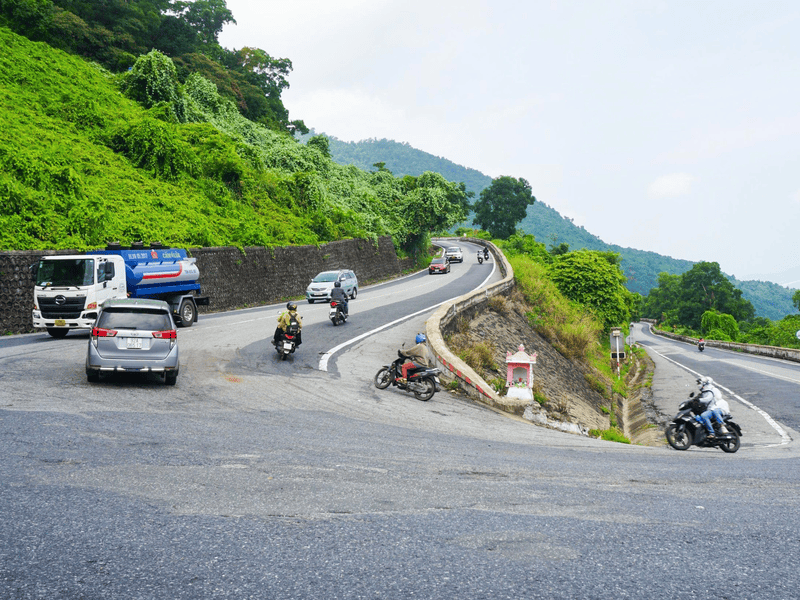
Frequently asked questions about Hai Van Pass
To help plan your visit and answer some of the most common queries, here are a few frequently asked questions regarding the Hai Van Pass:
How long does it take to drive through Hai Van Pass?
The time taken to drive across the Hai Van Pass varies significantly depending on your speed and the number of halts you make along the route. On average, a one-way journey will take from one to two hours. However, most tourists reserve additional time to take in the view and take pictures. For motorcyclists riding at leisure, riding through the Hai Van mountain pass will take up to several hours, upon incorporating cultural and natural stops throughout the Hai Van Pass in Vietnam.
Is Hai Van Pass suitable for first-time riders?
The Hai Van Pass Vietnam is a thrilling ride that can be enjoyed by both experienced riders and first-time riders. While the road is well signposted and maintained, its steep inclines and sharp turns can be challenging for new riders. Less experienced travelers should take guided tours or ride in the company of experienced riders. Riding in dry weather conditions and off-season can also make the journey along the Hai Van Pass more bearable and safe.
Are there entrance fees or tolls?
There are no considerable entry costs to travel via the Hai Van; however, consider the fact that some specific sites or attractions on the way may charge nominal costs. Minor tolls for maintenance in some areas are also charged by local authorities. It is always advisable to carry some local money while touring the Hai Van Pass in Vietnam to cater to any unexpected expenditure that arises during your visit.
Are nights appropriate for Hai Van Pass visits?
Hai Van Pass Vietnam is almost a daylight travel spot since taking the winding roads during low-visibility days may turn out to be really challenging. Travel during nighttime is not so suggested, particularly to strangers who do not know the region. Although veterans might want to do so during night times, the best experience would be to take road travel during the daytime so that every minute feature of this exquisite Hai Van mountain pass can be experienced well and in full.
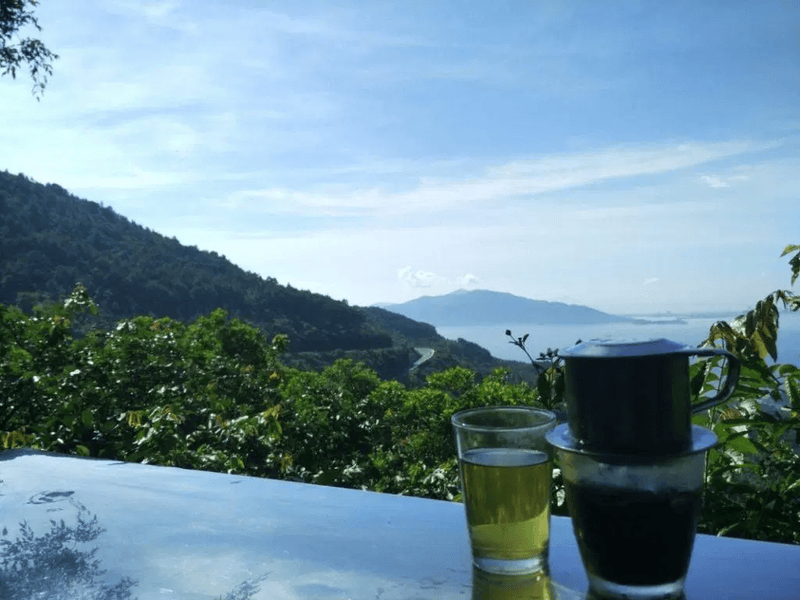
Join TravelByHuman's Travel for an extraordinary cultural journey today! With over 15 years of proven excellence and a reputation as one of Vietnam’s finest travel agencies, TravelByHuman's Travel offers expertly curated tours that open the door to the vibrant cultures of Vietnam, Laos, and Cambodia. Our young, dynamic team embraces modern 4.0 technology to bring your tour experience to life, ensuring you enjoy every detail from planning to exploration. Experience travel that is immersive, sustainable, and designed to showcase the best of local heritage and natural beauty.
The beauty of the Hai Van Pass Vietnam is that it is quite capable of blending natural beauty with cultural significance. From its historical significance to being a symbol today among tourists, the pass continues to draw tourists. With varied itineraries to suit varying tastes – from a half-day excursion between Hue and Da Nang to a relaxed half-day photo safari or a package tour of local attractions like Marble Mountains and Lang Co Bay – each experience along the Hai Van Pass is unique and unforgettable.







